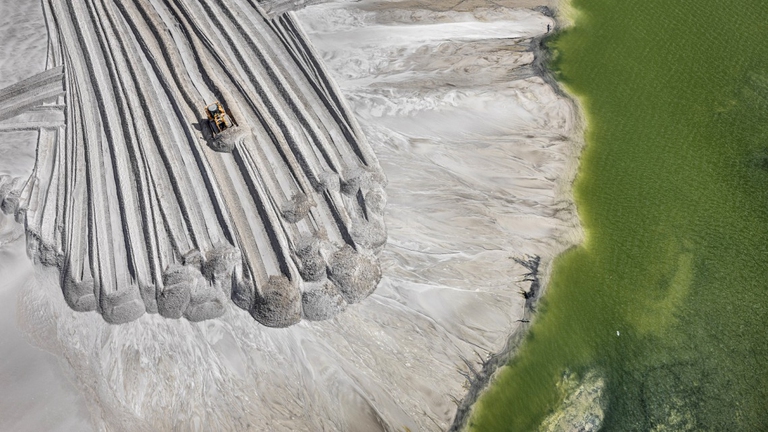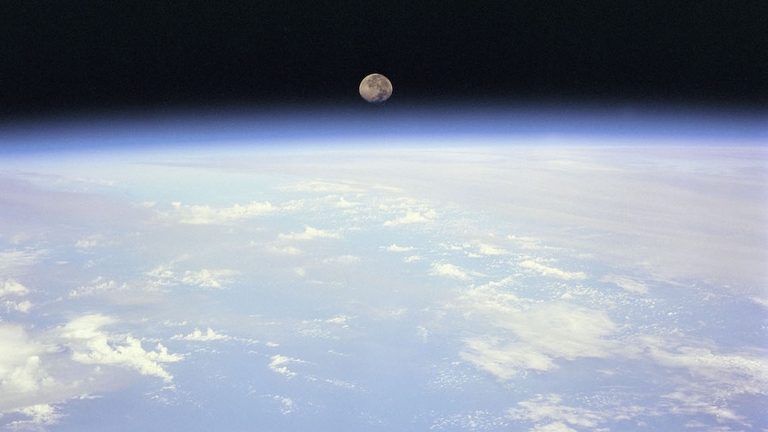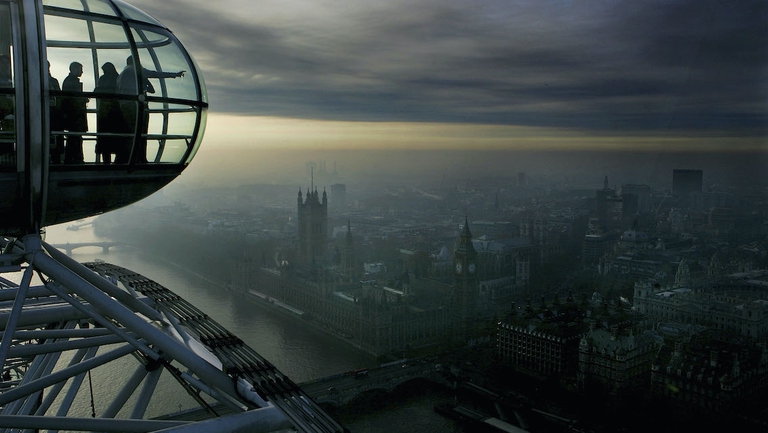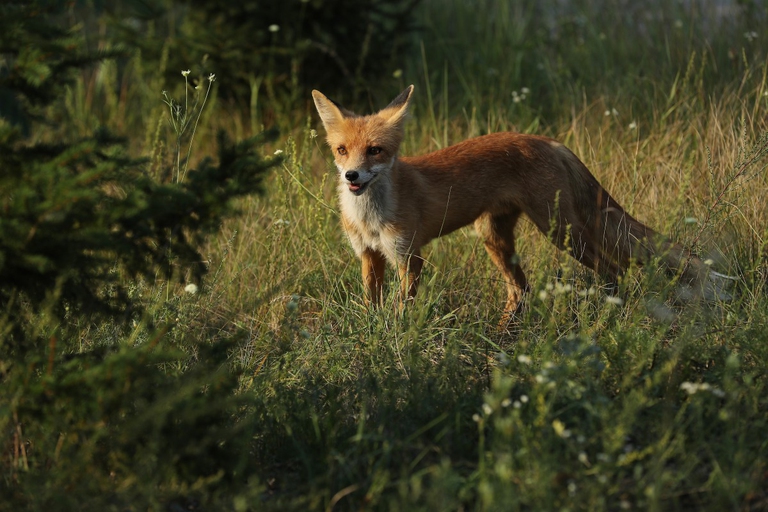
Several hundreds of women in India have rejuvenated vast stretch of forest land through a unique method of guarding the forest.
The 10 best books about the environment, to change your perspective on the world around us and on our role in the global ecosystem.
From Darwin to Lovelock via Thoreau and Oreskes, a journey that will make you reassess what you think you know about humans’ role in our ecosystem. These ten books, chosen together with publishing house Edizioni Ambiente, are more relevant than ever.
In 1543 Nicolaus Copernicus published De revolutionibus orbium coelestium. Earth went from being the centre of the universe to just another planet in orbit around the sun. In 1859, Charles Darwin published On the Origin of Species after “one long argument” that began during the expedition on the Beagle, the ship on which he travelled the world for five years. With this book, the English naturalist struck another blow, just like Copernicus had, at claims of an anthropocentric universe. Humans are a species like any other, subject to evolution and natural selection and capable of transmitting acquired traits by heredity. Darwin reached these conclusions without any knowledge of genetics: Mendel’s peas were yet to come. Regardless, On the Origin of Species remains one of the most important books ever published. It still has the power to ignite the rage of religious fundamentalists the world over and reminds us that humans are one of the “endless forms most beautiful and most wonderful that have been, and are being, evolved”.
Two years, two months and two days: this is how long Thoreau‘s voluntary exile lasted in a three-by-five metre hut he built himself on the shores of Lake Walden, in Massachusetts, USA. From here, he observed the society he’d decided to distance himself from, identifying its greed, hypocrisy and subservience to the dictates of capitalism. Walden, published in 1854, covers a little bit of everything: the expenses Thoreau had to cover to support his solitary lifestyle (the freedom only cost him a few dollars), praise for the classics of Greek and Latin literature, the many sounds you can listen to if you’re quiet and meditations on the values of solitude and vegetarianism. However, the most important theme is the force with which Thoreau invites us to practice civil disobedience and re-establish our relationship with the wilderness, which the author sees as the basis for “the world’s survival”. Cinephiles might appreciate that a copy of Walden appears on the bedside table of Into the Wild‘s protagonist Christopher McCandless.
The image of a silent spring, emptied of birdsong and the buzzing of insects, is one that has the power to stick in your mind. Rachel Carson used it in her 1962 book in which, for the first time, she decries the effects of the indiscriminate and mass use of DDT and other pesticides on the health of people and ecosystems. Since then, the American biologist has consistently been the subject of vicious attacks from food industry lobbyists and misogynist right-wingers. She’s been accused of having caused the deaths of millions of people in Africa and in developing countries, among other things. Unfortunately for the planet, her theses have been confirmed by thousands of scientific studies on the evolution of DDT resistance and associated harm to human health. The alarm Carson raised is still current and we must take heed, especially in light of alarming data on the decline of insect populations all over the world. And if you happen to speak to one of her critics, remind them that Carson never asked for DDT to be banned. While she denounced its dangers, she asked only that it be “used wisely”.
In 1972, a group of researchers was commissioned by the Club of Rome to elaborate scenarios about global trends in five areas: population dynamics, industrialisation, pollution, resource use and food production. They used the first mathematical models developed to study the behaviour of non-linear systems to develop 12 scenarios. Eight of these resulted in total collapse, either due to resource exhaustion or excessive pollution. This study on the limits to growth, though fiercely criticised, has so far proven true. This is also because its premise is inescapable: infinite growth on a finite planet isn’t physically possible. Fortunately, the authors also point out a viable path towards economic and ecological stability in which each person’s needs can be met.
With all due respect, in Ecclesiastes it is wrongly claimed that there’s “nothing new under the sun”. Or, rather, this was true for a long time, at least until the transformations that began with the Industrial Revolution and gained momentum in the 20th century. These changes to our planet are akin to a “controlled experiment of gigantic proportions”. With great clarity, McNeill reconstructs the connections and mutual influences between demographics, urbanisation, technological innovation, economic structures, ideologies and the various components of the biosphere in the 1900s. These are used to support the argument that the element that really distinguished this century, more than the two world wars, the collapse of communism or the internet revolution, was the impact of anthropic activities on the environment. Aside from some (inevitable) simplifications, Something New Under the Sun is required reading for anyone interested in the history of the environment and its transformations.
In the Renaissance, the term “polymath” was used to refer to exceptional individuals who make their mark in various fields of knowledge. James Lovelock is one of the last people to fit this description: he made important contributions to cryogenics, invented instruments that were essential in the discovery of the role of CFCs in the destruction of stratospheric ozone, and was part of NASA missions to analyse Mars’ atmosphere. Thanks (also) to knowledge gained during these missions, Lovelock developed the Gaia theory, according to which the Earth is a single superorganism in which living components interact with non-living ones to transform the environment making it favourable to life. While Gaia theory had its precursors, for example in the work of Russian Vladimir Ivanovich Vernadsky, the English polymath should be recognised for having brought it to the scientific community’s attention, and for elaborating one of the fundamental constituents of modern Earth system sciences.
E.O. Wilson is a sociobiology theorist (who sparked many debates in the late 1970s-early 1980s) who has written formidable books on the social life of ants, altruism and the “fusion” between hard sciences, art and literature. He advocates the ideas that in order to save the planet we need to turn half of it into a nature reserve. Furthermore, it’s widely accepted that Wilson is also the inventor of the term “biodiversity“. Even if this wasn’t really the case, the American entomologist is certainly one of the scientists who has most contributed to popularising the term and explaining its relevance and implications. In his book Biodiversity (1988), Wilson accompanies his readers through the luxuriant and stunning diversity of life on Earth, starting from bacteria and viruses, all the way to large superorganisms like social insect colonies and rainforests. The book has retained its capacity to inspire awe, even by simply estimating the number of species living on Earth at over 110 million.
Herman Daly is the economist behind the theory of the steady state economy. The starting conditions, borrowed in large part from Romanian economist and mathematician Nicholas Georgescu-Roegen, are incontrovertible: the economy is a subset of the Earth’s ecosystem, ecosystemic resources are finite and can’t increase, and all economic activities generate waste and pollution. The free market is unable to manage these processes, which therefore require states’ regulatory intervention. Daly’s book has sparked a very fruitful debate, which in the US has become entwined with proposals including post-growth, degrowth, ecological economics, and with more recent green and circular economy models as well.
The premise is simple, albeit completely improbable. Imagine that human beings disappear off the face of the Earth tomorrow. After inevitable accidents, weeds would only need a few days to take over previously inaccessible places, and animals would slowly occupy areas once inhabited by humans. With each passing year, rain and the weather would start eroding more and more buildings and infrastructure; after a few centuries, cities would turn into forests. Meanwhile, atmospheric levels of CO2 would keep decreasing. Weisman travelled to areas like the DMZ between North and South Korea, the city of Pripyat near Chernobyl, where humans haven’t set foot in decades, as well as the virgin forest of Białowieża, one of the last untouched environments on the planet. These travels were essential in helping the author write a book that, through the lens of an empty world, highlights the impacts of human activities on the environment and the risks of resource overconsumption.
Before Merchants of Doubt, other books such as Doubt Is Their Product by David Michaels had documented the influence of lobbies on environmental policies and the media. Naomi Oreskes and Erik Conway‘s book, however, stands out thanks to the vast amount of sources used (more than a million documents just for the tobacco chapter) and precision with which it reconstructs the birth and evolution of disinformation tactics on environmental topics. Tobacco, acid rain, the destruction of the ozone layer, the effects of pesticides and global warming: in relation to each of these themes, the authors list the “merchants of doubt”, scientists, journalists and politicians who bent facts to fit their ideology seeking personal gain or profit. But even while individuals and interests groups have manipulated and distorted information, science remains a collective enterprise, cumulative and self-correcting, that is still able to give answers and suggest solutions, more precious now than ever before.
Siamo anche su WhatsApp. Segui il canale ufficiale LifeGate per restare aggiornata, aggiornato sulle ultime notizie e sulle nostre attività.
![]()
Quest'opera è distribuita con Licenza Creative Commons Attribuzione - Non commerciale - Non opere derivate 4.0 Internazionale.
Several hundreds of women in India have rejuvenated vast stretch of forest land through a unique method of guarding the forest.
The solution developed by the Italian startup Agri-E enables on-site bioethanol production, promoting energy self-sufficiency for farms.
Through stories of encounters between humans and animals, Our Wild Calling offers a way out of an age of solitude. We speak to author Richard Louv.
South African court dismisses a major lawsuit by 140,000 Zambian women and children against Anglo American for Kabwe lead poisoning. A setback for affected communities enduring the lasting impact of lead contamination.
Controversial African land deals by Blue Carbon face skepticism regarding their environmental impact and doubts about the company’s track record, raising concerns about potential divergence from authentic environmental initiatives.
Majuli, the world’s largest river island in Assam State of India is quickly disappearing into the Brahmaputra river due to soil erosion.
Food imported into the EU aren’t subject to the same production standards as European food. The introduction of mirror clauses would ensure reciprocity while also encouraging the agroecological transition.
Sikkim is a hilly State in north-east India. Surrounded by villages that attracts outsiders thanks to its soothing calmness and natural beauty.
Sikkim, one of the smallest states in India has made it mandatory for new mothers to plant saplings and protect them like their children to save environment















